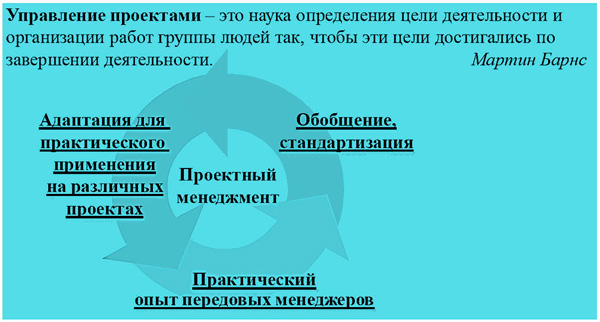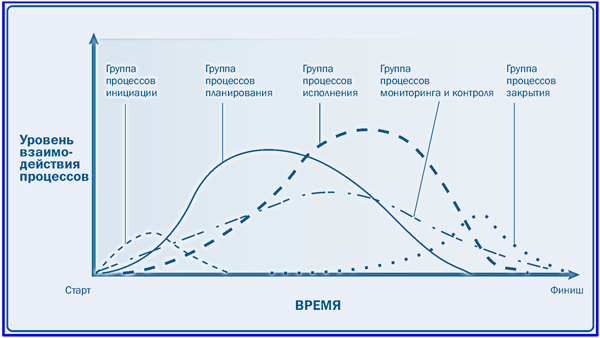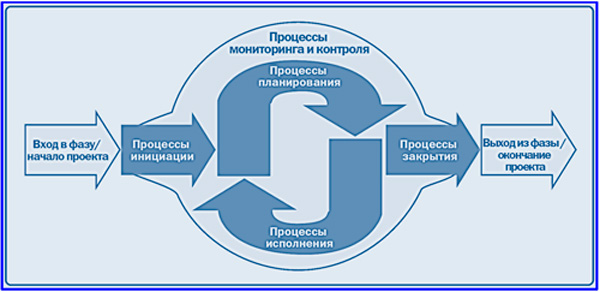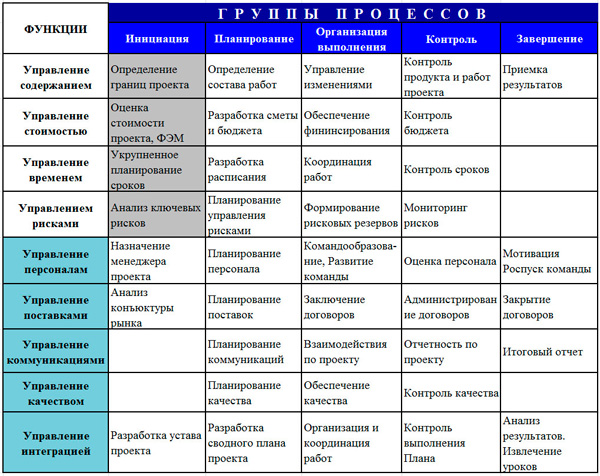Methodological aspects of project management
Business as a progressive activity until the end of the phase of maturity is simultaneously in two states of aggregation. The first state is associated with the usual procedures for the production of a product that is continuously or regularly released to the outside world. The second state is impulsive, unique, promoting and developing. This state is accompanied by a special form of development - projects. Each organization accumulates experience and knowledge of the implementation of unique project tasks. Project management draws on a wealth of international and personal experience in this challenging business.
Essential points of project management
Projects have specific goals. At the same time, there are such tasks, the goals of which and the previously formulated results are specified in the course of implementation. Uniqueness as a feature of a project action is often a relative phenomenon. There is not the slightest doubt about the temporary nature of such an activity, which, as a genuine task, has a beginning and a precisely designated time point for its completion.
It is difficult to disagree with the position of V.I. Liberson, President of the Moscow Branch of the PMI Institute, that the essence of project management is associated with the phenomenon of a project as a temporary enterprise designed to create unique products and services. Leadership is based on the use of knowledge, skills, methods, tools and technologies in the project area. This toolkit has been accumulating in national and international standards for many decades. The PMI at PMBOK defines project management as follows.
Project management is carried out with the aim of meeting or exceeding the expectations of the participants. It should be recognized that it is quite logical to apply a process methodology to the management phenomenon, implying regulations as system accumulators of past experience. Project management is in continuous development. The best practices developed by pioneer managers are tested, generalized, translated into the form of standards. Then the standards go through the stage of adaptation to various design options in a practical plane. And so it happens along the spiral development cycle.

Development cycle of project management
Essential management aspects are the content, constraints and risks of projects. The management environment is determined by a number of pivotal phenomena that have classification features. These include:
- environment;
- stakeholders as individualized environmental positions;
- types of projects;
- management principles;
- project management processes;
- project management functions;
- project management models;
- organizational structure;
- organizational culture;
- resource platform;
- economic efficiency of investments;
- integrated project management.
Comprehensive project management in companies with a large volume of work and a significant number of simultaneously implemented unique tasks becomes possible from the moment the corporate (KSUP) is introduced. The introduction of the KSUP makes it possible to systematize the accumulated experience in the field of design development. Project management decision making is becoming much more streamlined. Risks and problems are identified much earlier, which means that they are minimized in time and removed from the orbit of the regulatory cycle.
Basic principles of project management
As a result of generalized experience and systemic phenomenon, project management is guided by certain principles. As basic rules, the principles of project management follow from the patterns that at one time led to the success of numerous decisions. Having specific features, they are also focused on general management principles. The following is the composition of the basic principles.
- The principle of a differentiated approach... When coordinating and regulating, it is imperative to take into account and use the various aspects of the project infrastructure. These include the expectations and contributions of the participants, specialized project management standards and the specifics of the implementation of projects by their types, etc.
- The principle of economic expediency... This principle presupposes an outstripping growth in returns from the implementation of the company's entire portfolio of projects in comparison with the totality of budgets for their implementation and the costs of maintaining the project office. All resources involved in the implementation are under control thanks to the procedures described in the processes. Actions outside the future economic viability within the framework of project activities are not permissible.
- Flexibility principle... It is assumed that the team will respond quickly and flexibly to all challenges and changes in the internal and external situation in relation to the project. In some cases, the management of a unique task also flexibly reacts to changes in the company as a whole. At the same time, flexibility does not in the least preclude sufficient strict adherence to the procedural procedures of project activities.
- Competitiveness principle... In conditions of limited labor and financial resources, the directions for the implementation of tasks are subject to ranking and selection on a competitive basis in the intracorporate competitive environment. The choice of projects is made based on the conditions of importance (compliance with the strategy), problematic and resource availability.
- The principle of separation of powers... The process management concept, which is applied in project management, requires adherence to the principle that each process belongs to a single owner. The process owner is responsible for the stages of in-process work and the achievement of the final result.
- The principle of openness... Project management standards are not dogma. It is assumed that current design practice may not comply with the requirements of the standards. In this case, it is assumed and recommended to re-check the basic provisions of the procedures. This is the openness of project management standards for their development.
- Best practices. The company's management is obliged to encourage its managers and teams to apply the best domestic and international experience in the field of project management. Key aspects of best practices should be borrowed from all available sources.
Process-functional model of project management
The project management system has a certain volume of elements, presenting a kind of isometric configuration. We, getting acquainted with project management, will present only its two-dimensional version, which includes the processes and functions of project management in their close relationship. Project management processes are detailed in the PMI. In the PMBOK guidelines, they are consolidated into five full-fledged groups, which are stages that are implemented sequentially and in parallel. Process groups are listed below:
- initiation;
- planning;
- execution;
- monitoring and control;
- closing.

Graph diagram of the interaction of process groups within a phase or project
The above graphical diagram visually depicts the event stages of a project deployment. They, like process groups, have a certain level of coordination, interaction and duration. From this perspective, a project is a collection of interrelated processes. The main areas of project management are covered in the PMBOK guide. At the same time, it is recognized that the key nuances of a variety of management methods remain in the heads of outstanding practitioners.
This is really so and quite natural. But the base provided by the PMI Institute is already more than enough to rely on the proposed process model and start using this management technology. The peculiarities of the process of monitoring and control as a "background" group of the organizational architecture are one of the valuable remarks of the management.

Place of monitoring and control in project management process groups
It is emphasized that project management processes are not phases of the life cycle of a project task. Moreover, they can be repeated and enter the cycle at almost every phase of it. In this sense, the concepts of a group of processes, stages and phases are not identical to each other. Processes and stages can be considered as synonyms only conditionally. Project management functions are also delimited from management processes. The matrix of the process-functional management model is presented below.

Matrix of the process-functional model of project management
Processes are collections of interrelated activities with clearly defined results and set deadlines. At the same time, functional areas represent compositions of actions and competencies that do not have a specific time reference. Many process operations may well be translated into a task form, and the areas of functions are determined only by the managerial competence zone.
The first four functional areas are core because they address three major aspects of project management: content, constraints (cost and time), and risks. The last five areas are optional. Human resources management is applied to the immediate environment and the team, while supply management refers to the external environment. Communication, quality and integration management are separate specific management loops.
The PM must understand that project task management is not only and not so much a situational impact on the team and other participants. This is a set of verified activities that the project manager and senior managers carry out, relying on the formalized experience of generations of specialists in the project field, not only of the company, but of the entire world business community. Project management implies the management's possession of special tools, methods, skills and is of a procedural nature. This approach ensures the reliability of the result.
 Discounted payback period
Discounted payback period Methodological aspects of project management
Methodological aspects of project management Scrum development methodology
Scrum development methodology